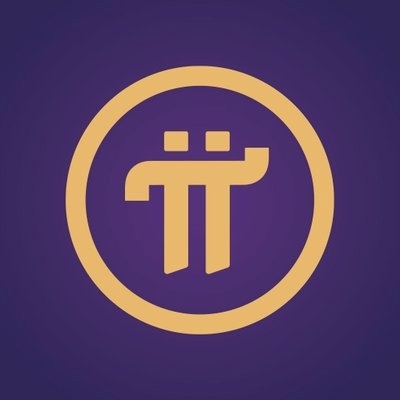How to Trade on Uniswap: A Comprehensive Guide

How to Trade on Uniswap: A Comprehensive Guide
The world of decentralized finance (DeFi) continues to grow at an astonishing pace, and at the heart of this revolution is Uniswap, a decentralized exchange (DEX) that has transformed the way we perceive and interact with digital assets. Whether you're a seasoned trader or a crypto newbie, understanding how to trade on Uniswap can open up a world of opportunities. This guide will walk you through the process, ensuring you have the knowledge and tools necessary to make informed trading decisions.
Understanding Uniswap: Beyond Traditional Trading
Uniswap operates differently from traditional centralized exchanges like Binance or Coinbase. Instead of relying on order books, Uniswap utilizes an automated market maker (AMM) model, which allows users to trade directly from their wallets. This approach enables instantaneous swaps of Ethereum-based tokens, facilitated by smart contracts on the Ethereum blockchain.
The Power of Liquidity Pools
Liquidity pools are the backbone of Uniswap's AMM model. Users pool their assets in smart contracts to provide liquidity, which is then used to facilitate trades. In return, liquidity providers earn a portion of the trading fees. This peer-to-peer system creates a more democratic and accessible trading environment, removing the need for intermediaries.
Benefits of Using Uniswap
- Decentralization: Uniswap does not require users to deposit funds into the platform. Instead, trades are executed directly from your wallet, giving you full control over your assets.
- Wide Token Variety: Uniswap supports a vast array of tokens, enabling you to trade almost any ERC-20 token available on the Ethereum network.
- Continuous Availability: Liquidity pools allow trades to occur 24/7, without the need for exchanges to open or close.
Getting Started: How to Trade on Uniswap
Before you begin trading on Uniswap, there are a few prerequisites. You will need an Ethereum wallet and some ETH to cover transaction fees. For a secure and user-friendly option, consider using the Bitget Wallet.
Step-by-Step Guide to Trading
Step 1: Set Up Your Wallet
First and foremost, you'll need an Ethereum wallet. A Web3-compatible wallet like the Bitget Wallet provides a seamless interface that connects directly to Uniswap.
- Download and install the Bitget Wallet on your device.
- Secure your wallet by writing down your seed phrase and setting up a strong password.
- Add some ETH to your wallet to cover gas fees associated with transactions.
Step 2: Navigate to Uniswap Interface
- Access the Uniswap interface by visiting their official site.
- Click on the “Launch App” button to enter the trading platform.
Step 3: Connect Your Wallet
Connecting your wallet to Uniswap is simple:
- On the Uniswap app, click on “Connect Wallet.”
- Choose your wallet provider, such as MetaMask or Bitget Wallet, and follow the prompts to connect.
Step 4: Select Your Tokens
- Choose the tokens you wish to trade using the “Swap” feature.
- You’ll need to select a token to send and a token to receive.
Step 5: Execute the Trade
- Input the amount you wish to trade. Uniswap will display how much you will receive in the other token.
- Click on “Swap” and confirm the transaction in your wallet.
- Pay the gas fee required to process the transaction on the Ethereum blockchain.
Step 6: Review Your Trade
- Double-check the details of your transaction.
- Once confirmed, your assets will be swapped, and your new balance should reflect in your wallet shortly.
Advanced Trading Strategies
While learning how to trade on Uniswap is straightforward, mastering advanced strategies can enhance your trading endeavors. Here are a few tips:
Impermanent Loss Mitigation
Providing liquidity can result in impermanent loss if token prices fluctuate. To minimize potential losses, stick to stablecoin pairs or ensure a good understanding of the risks involved.
Arbitrage Opportunities
Arbitrage involves exploiting price differences between markets. Astute traders can make profits by buying low on one DEX and selling high on another, though transaction fees must be considered.
Utilize Analytics Tools
Tools like Uniswap V3 Analytics offer insights into liquidity volumes and price movements, helping traders make knowledgeable decisions.
Potential Challenges with Uniswap
Like any financial market, trading on Uniswap carries risks and challenges:
- Volatile Gas Fees: Transaction costs can fluctuate, making trades expensive during peak network congestion.
- Rug Pulls and Scams: Always verify token legitimacy, as anyone can list a token on Uniswap.
Despite these challenges, diligent research and strategic planning can help you navigate the risks.
Uniswap has profoundly impacted the way traders engage with digital assets, offering a decentralized, flexible, and user-friendly trading experience. By understanding how to effectively trade on Uniswap, whether you're maximizing liquidity pools or seeking the best token swaps, you unlock the potential of decentralized finance. Equip yourself with the tools and knowledge to thrive in the dynamic DeFi environment, and you'll be well on your way to achieving your trading goals.
Latest articles
See moreAbout author
Im Blockchain Nomad, an explorer navigating the crypto world and cross-cultural contexts. Fluent in English and Arabic, I can analyze the underlying protocols of Bitcoin and Layer 2 scaling solutions in English, while also interpreting the latest blockchain policies in the Middle East and the integration of Islamic finance with cryptocurrencies in Arabic. Having worked on building a blockchain-based supply chain platform in Dubai and studied global DAO governance models in London, I aim to showcase the dynamic interplay of blockchain ecosystems across the East and West through bilingual content.
























